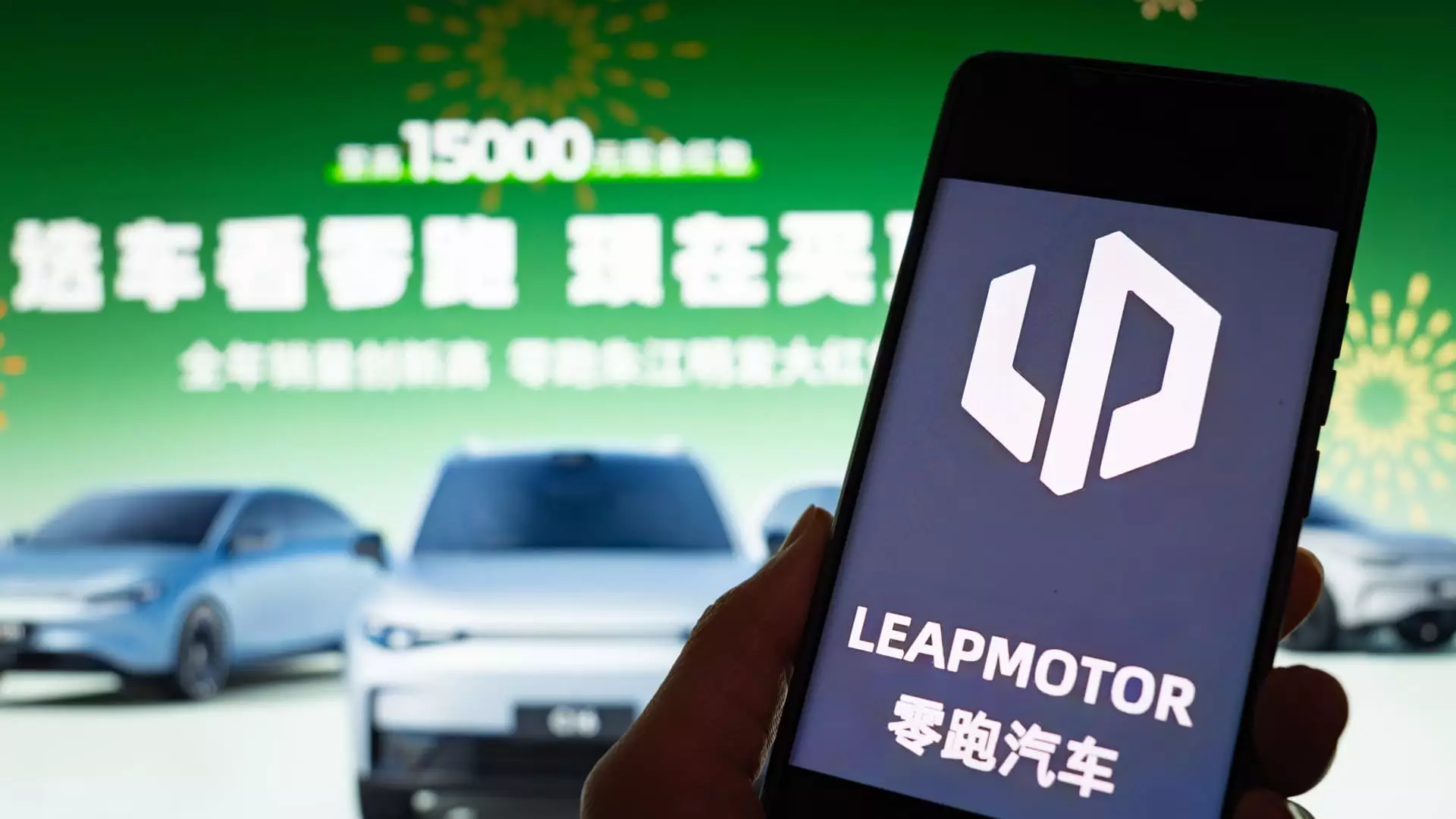In a landscape where sustainability meets vehicular innovation, the Chinese electric vehicle (EV) sector finds itself in a duel of survival and dominance. Companies like Leapmotor and Aito have emerged as the titans of this battlefield, reporting staggering delivery numbers that underscore a ferocious pricing war. With Leapmotor delivering 45,067 vehicles in May—that’s a 148% year-over-year surge—it’s evident that competitive pricing coupled with strategic model launches can indeed yield phenomenal results. Yet this upward trajectory raises a critical question: are the profits sustainable, or are we witnessing a bubble that could burst just like the tumultuous period surrounding Evergrande?
On May 15, Leapmotor unveiled its updated C10 model, a mid-sized SUV priced attractively at 122,800 yuan (or approximately $17,045). The immediate market response was indicative; over 13,000 units were delivered shortly after launch, reflecting a youthful consumer base eager for affordability married to modern automotive technology. Similarly, Aito, conducted by Seres and powered by the well-respected tech of Huawei, set the automotive world ablaze with its May announcements. Featuring their ultra-luxury sedan, the Maextro S800, priced at an eye-watering 708,000 yuan, Aito’s delivery of 44,454 vehicles showcases the expansive range of consumer agendas—from thrifty millennials to affluent tech enthusiasts.
BYD: A Giant That Stumbles
As the old adage goes, “The bigger they are, the harder they fall.” BYD, the industry giant, dominated the sales charts with 376,930 cars sold in May, representing a noteworthy year-on-year growth. However, with great power comes great scrutiny. BYD’s recent price cuts on 22 models—including a 20% reduction on its Seagull hatchback—have not only shocked the market but also sent its share prices tumbling. Such aggressive pricing strategies raise the specter of market manipulation and financial distress among its dealers, alleging that BYD pressured one of its dealers in Shandong over cash flow issues.
These actions, while aimed at maintaining a competitive edge, could potentially lead to deeper consequences reminiscent of the events surrounding the Evergrande crisis. This awareness is acute among investors who are now questioning whether a surge in vehicle production can coexist with a stable financial underbelly. Financial health and transparent transactions are critical in an industry that requires not only innovation but also a firm foundation.
Emerging Challenges for New Entrants: Xpeng and Nio
Amidst this backdrop of soaring deliveries and aggressive competition, there lies another narrative—one of struggle and modest growth. Xpeng has managed to hold its own with deliveries of 33,525 vehicles, a small downturn from the previous month but still graced with a remarkable year-on-year growth of 230%. Meanwhile, Nio’s performance is contrastingly sobering; their deliveries fell to 23,231, reflecting a troubling growth trend despite a budding presence in the family-oriented EV segment through its Onvo brand.
As startups strive for success, the imbalance is becoming clearer. The disparities in growth rates highlight the challenges smaller players face as they escalate production outputs while trying to maintain customer loyalty amidst price wars and fierce competition. Offers like free driver-assistance technology from Zeekr are innovative yet fail to address the looming question of long-term sustainability. In an industry driven by performance and perception, these moves may be too little, too late.
Exporting a Price War: Western Tariffs and Emerging Markets
While Chinese automakers rip through the domestic market, expansion ambitions face stern headwinds from geopolitical dynamics. Tariffs imposed by the European Union and the U.S. threaten to suffocate the dreams of these manufacturers eager to invade Western markets. In light of this, a gradual pivot toward emerging markets appears to be taking shape. BYD’s recent collaboration with CFAO Mobility to enter the Benin market reflects a strategic move to sidestep Western tariffs.
As industry players recalibrate their strategies, it becomes clear that future success will not only depend on superior engineering but also on adaptability in international market landscapes. Disruption and transformation will demand creative thinking, collaborative approaches, and an understanding of diverse consumer landscapes across the globe. The path forward is rife with challenges, but within those challenges lies the potential for genuine innovation and success that can define the next chapter of electric mobility.

